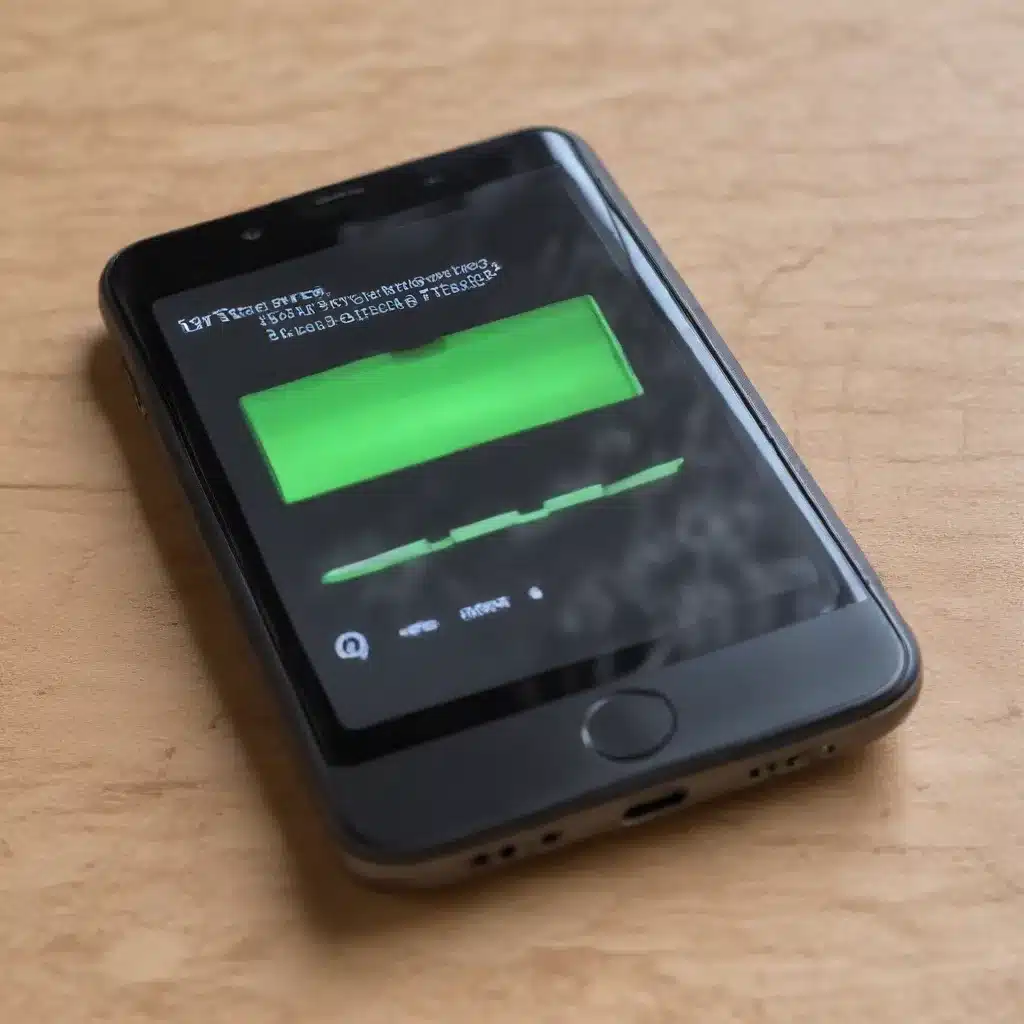
Understanding Battery Basics
Smartphones have become an integral part of our daily lives, but their reliance on rechargeable batteries can sometimes be a source of frustration. As a seasoned IT professional, I’m here to share advanced tips and insights to help you maximize your smartphone’s battery life and extend its usage throughout the day.
Lithium-ion batteries, used in most modern smartphones, are complex and sensitive components. These batteries have a limited lifespan and their performance can be affected by various factors, such as temperature, charging patterns, and usage habits. Understanding the nature of these batteries is the first step in optimizing their longevity and efficiency.
One crucial factor to consider is a battery’s “chemical age,” which refers to its degradation over time. As a lithium-ion battery ages, its maximum capacity and ability to deliver peak power can diminish, leading to shorter runtimes and unexpected shutdowns. This is a natural consequence of the battery’s chemistry and is not indicative of a defect.
To address these challenges, smartphone manufacturers have implemented advanced power management systems that dynamically manage device performance to prevent unexpected shutdowns. These systems carefully monitor factors like battery state of charge, temperature, and impedance to ensure the device can operate safely and reliably, even as the battery ages.
Optimizing Battery Performance
Now, let’s dive into the specific tips and techniques you can use to maximize your smartphone’s battery life:
Adjust Display Settings
Your smartphone’s display is one of the biggest power-hungry components. Reducing the screen brightness can have a significant impact on battery life. Aim to keep your screen brightness at 75% or less, unless you’re using your device in direct sunlight.
Many modern smartphones also feature adaptive brightness, which automatically adjusts the screen’s luminance based on ambient lighting conditions. Enabling this feature can help optimize battery usage without compromising visibility.
Additionally, some devices offer high screen refresh rates, typically up to 120Hz, for a smoother visual experience. However, these high refresh rates can also drain the battery faster. Consider activating an adaptive refresh rate setting, which will dynamically adjust the refresh rate depending on the content you’re viewing.
Optimize App and Background Activity
Apps running in the background can be a significant drain on your battery, even when you’re not actively using them. Identify and limit the apps that are allowed to run in the background or access your location, GPS, and other power-hungry features.
On Android devices, you can go to the Settings > Battery and device care > Background usage limits menu to manage app behavior and prioritize battery life. For iPhone users, head to Settings > Battery > Background App Refresh to control which apps can run in the background.
Predownload content like maps, music, and podcasts over Wi-Fi before you go out, so your device doesn’t have to continuously fetch data over cellular networks, which can be more battery-intensive.
Enable Power-Saving Modes
Most smartphones offer dedicated power-saving modes that can significantly extend your battery life. These modes typically reduce screen brightness, limit processor speed, and restrict background activity to conserve power.
On Android devices, you can find the power-saving mode in the Settings > Battery and device care menu. This feature provides estimates of the additional battery life you’ll gain with each optimization.
iPhone users can access the Low Power Mode in the Settings > Battery menu. This mode temporarily reduces or disables certain features to save battery life until you can recharge your device.
Manage Connectivity and Location Services
Cellular data, Wi-Fi, Bluetooth, and GPS all consume battery power, especially when you have poor signal strength or are in areas with limited coverage. Consider turning off these features when you don’t need them.
On Android, you can manage your connectivity settings by going to Settings > Connections. iPhone users can find these options in the Settings > Cellular and Settings > Bluetooth menus.
If you’re traveling in remote areas with limited cellular coverage, you can also temporarily disable data roaming to conserve battery.
Another battery-draining feature is GPS. While it’s essential for many location-based services, you can turn off GPS when it’s not in use or limit the apps that have access to your location to save battery life.
Optimize Charging Habits
How you charge your smartphone can also have a significant impact on its battery performance and lifespan. Avoid charging your device while it’s in use, as this can generate heat and put additional strain on the battery.
Aim to keep your battery level between 20% and 80% whenever possible. Repeatedly charging from very low levels or letting the battery completely drain can accelerate its degradation over time.
If you’re storing your device for an extended period, it’s best to keep the battery around 50% charged. This helps maintain the battery’s overall health and prevents it from becoming overcharged or completely depleted.
Consider Battery Replacement
Despite your best efforts, all rechargeable batteries will eventually degrade and need to be replaced. If your device’s battery health has significantly diminished, leading to noticeable performance issues or unexpected shutdowns, it may be time to have the battery replaced.
Many smartphone manufacturers, including Apple and Samsung, offer battery replacement services through their authorized service centers. This can help restore your device’s performance and provide a fresh start for your battery’s lifespan.
Conclusion
Maximizing your smartphone’s battery life requires a proactive and informed approach. By understanding the nature of lithium-ion batteries, adjusting your device’s settings, managing connectivity and background activity, and optimizing your charging habits, you can significantly extend your smartphone’s usage time between charges.
Remember, every device and usage pattern is unique, so experiment with these tips and find the right balance that works best for your needs. For more information on smartphone maintenance and IT solutions, be sure to visit itfix.org.uk.
Additional Resources
- Reddit post on OnePlus battery management tips
- Samsung’s 8 tips for maximizing smartphone battery life
- Reddit discussion on maximizing Pixel 8 battery life
- Apple’s support article on iPhone performance and battery












